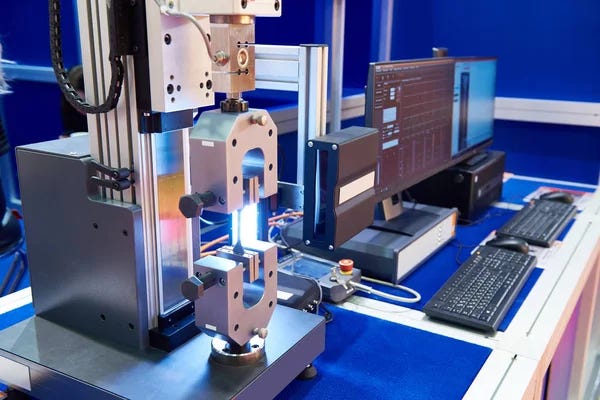The Art of AI-Based Armor Design
A new frontier in armor innovation
Imagine you set out to design advanced composite armor for the U.S. Navy. You run a team of materials scientists, mechanical engineers, and armor designers. After some work, you end up with a potentially viable design.
Now what? You have to demonstrate the design meets specific military requirements. Simply put, you need to shoot it. Fire projectiles at it in controlled, standardized experiments, over and over, to statistically verify the necessary performance.
And then you find it fails in unexpected ways. Not surprising: composite materials comprised of multiple, different, material constituents, arranged in new ways can show unexpected behavior. So, you need to figure out what failed and why, and then go back to the drawing board, redesign it, and begin testing it all over again.
The cost of shooting the requisite number of advanced composite armor “test articles” can quickly become significant. Especially considering the additional R&D needed from a team of materials scientists and engineers to study and integrate the results into new design cycles.
Thankfully, better ways loom on the horizon. Train a machine learning system on data from many past experiments in the right way, and it can predict material properties and behaviors pointing armor designers and engineers towards beneficial desisgns, while identifying parameters that would otherwise lead to system failure.
Machine learning to accelerate design cycles.
For any kind of technical design, the advantage of ML-based systems over traditional software is not necessarily that it can enumerate countless possibilities faster.
Rather, machine learning can often generate valuable insights from less extensive data – in a similar way human brains do. For armor design, to explicitly calculate the mechanical properties for every possible armor configuration – e.g., relationships between softer, yet strong materials, versus hard and stiff materials -- quickly becomes untenable. This goes beyond any reasonable computational resources. Instead, it's partly about the kind of inference human brains are capable of.
In my interview with Michael Breslin, Director of Special Programs at materials science company MACRO Industries, he described how much of armor design today happens as a highly intuitive practice.
"Armor development today still has a large component of witchcraft. Materials are used because they work, but why they work is often not fully understood. Further, different materials don't always play well together as expected, and designers often end up with a 'voodoo' approach," he said. “Systems are fielded that work, but why they work is not always understood. This makes improving the performance of these systems difficult, requiring a methodical build-it-and-shoot-it to see if improvements can be had.”
"And yet the importance of a quicker path to better armor designs and performance is clear. Better armor means lives saved sooner."
"For example, consider ultra-high molecular weight polyethylene (UHMWPE), a major composite material used in many armors. Its fibers have very high strength. Unfortunately, when used in a composite sheet it has only a portion of the pure fiber performance. This is because the load is carried inefficiently by the matrix material. If future design cycles can improve the performance of the composite to be closer to that of the naked fiber, that’s a game-changer. But traditional, incremental experiments take a long time and a lot of money. If AI can close the experimental field, it will push the industry forward by a quantum leap, overnight."
And beyond important military applications, novel armor designs can lead to significant commercial applications, creating entire industries in one go.
For example, DuPont developed ballistic nylon for flak jackets worn by airmen in World War II. Today, ballistic nylon is used in everything from backpacks to seatbelts, and the industry was valued at $14B in 2021, projected to reach $26.1B in total market size by 2031. And with modern infrastructure, today's armor innovation and industry adoption can happen significantly faster.
In the near future, machine learning will be increasingly applied to armor design, and other fields where a costly R&D problem has a large number of possibilities, beyond reasonable computational bounds. While traditional human-only R&D remains the norm, a well-built machine learning-based tool can help to generate the needed insights in much the same way a human R&D team would -- except faster, cheaper and with potentially new possibilities beyond direct human capability.
In a recent effort, Marcus Buehler et al, Professor of Engineering at the Massachusetts Institute of Technology (MIT), applied machine learning to composite armor design, to determine what arrangement of soft and stiff materials would result in a "good" or "bad" armor design, according to specific metrics.
The results were promising. Even with limited data, and fairly limited training of the model itself, the system predicted armor configurations at high accuracy.
As the team concludes: "With more computational resources, the potential of ML in composite design and optimization is unimaginable."



